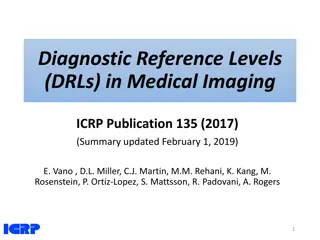Insights into Multi-View Imaging System Optimization
Delve into the simulation and calibration of a multi-view imaging system using differentiable ray tracing and gradient-based optimization. Explore the challenges of ambiguity in results and the impact of angular offset on imaging accuracy. Discover how the system handles errors and maintains precise imaging of point sources.
Download Presentation

Please find below an Image/Link to download the presentation.
The content on the website is provided AS IS for your information and personal use only. It may not be sold, licensed, or shared on other websites without obtaining consent from the author.If you encounter any issues during the download, it is possible that the publisher has removed the file from their server.
You are allowed to download the files provided on this website for personal or commercial use, subject to the condition that they are used lawfully. All files are the property of their respective owners.
The content on the website is provided AS IS for your information and personal use only. It may not be sold, licensed, or shared on other websites without obtaining consent from the author.
E N D
Presentation Transcript
Simulation of the multi-view imaging system with differentiable ray tracing August 2021
Gradient-based calibration Simulator calibration on real data with gradient-based optimization For now, only fitting for the normals Target positions extracted with k-means clustering Imaged point source perfectly matches the target for all mirrors (MSE loss is zero) 2
Ambiguity (1) Perfect matching in those preliminary results that do not take into account: - Object offset - Mirror offsets - Lens & sensor offsets (orientations & positions) This suggest that multiple solutions co-exist 3
Ambiguity (2) Multiple solutions co-exist, and yet Worse results Mirror 1 Mirror 2 Mirror 18 running the optimization algorithm with different initializations always yields the same results 4
Angular offset What are the errors? Let me nuance my previous analyses on tolerances Beyond 1.1 degree, the principal rays do not make it though the numerical aperture (f-number= ? 1.4) but other rays do Same analysis but with (f- number= f) 5
Circle of confusion The point source is still imaged within ~1pixel 6























